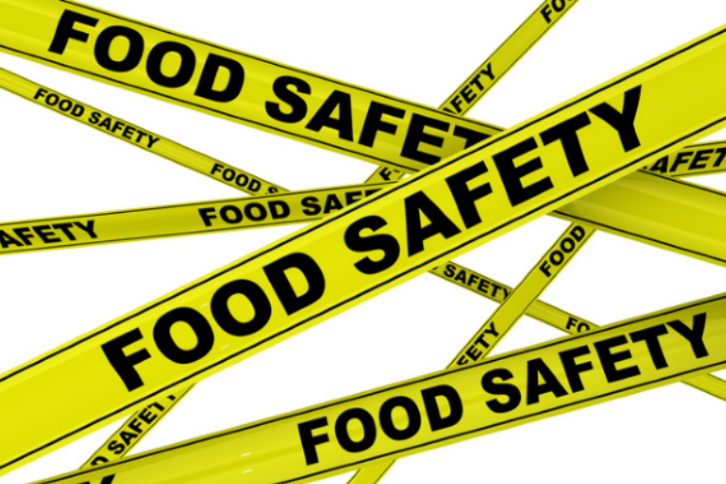Allergen compliance: The high stakes of getting it wrong

Allergen compliance has become a critical issue, with lives at stake when producers fail to meet standards. How far has the industry progressed since the introduction of Natasha’s Law and what are the true costs of getting it wrong?
In recent years, the tragic deaths of Natasha Ednan-Laperouse, Hannah Jacobs, Celia Marsh, Owen Carey and Megan Lee have underscored the life-threatening dangers posed by food allergens.
These cases represent a profound failure in allergen compliance within the food industry. This has significant ramifications, as non-compliance not only carries devastating personal costs but also significant financial, legal and reputational risks.
The tragic cost of non-compliance
Hannah Jacobs, a 13-year-old with a severe dairy allergy, died in February 2023 after consuming a hot chocolate at Costa Coffee made with cows' milk instead of soya milk (an inquest found there had been 'failure of communication' between Hannah’s mother and the staff), leading to anaphylaxis and her subsequent death.
This tragedy mirrors other high-profile cases, including that of Natasha Ednan-Laperouse, whose fatal allergic reaction to sesame seeds on a Pret-a-Manger baguette in 2016 prompted significant changes in the UK’s allergen labeling laws, now known as Natasha’s Law.
These deaths illustrate the human toll that allergen mismanagement can take, emphasizing the need for businesses to improve compliance, training and transparency.
“A single death from undeclared or mismanaged allergens is one death too many,” said Jessica Merryfield, head of Policy for Chartered Trading Standards Institute (CTSI).
“It’s devastating to hear of another life cut short due to a lack of understanding the needs of a food hypersensitive consumer. The tragic death of Hannah Jacobs is an unwelcome reminder that all businesses must take their responsibilities seriously when it comes to allergens."
Tragic deaths highlight need for improved allergen labeling
Celia Marsh (41) died in 2017 after suffering an allergic reaction to a vegan wrap from Pret a Manger; the same year, Owen Cary, who was celebrating his 18th birthday, died after consuming a chicken containing buttermilk from Byron Burger. On New Year’s Day 2017, 15-year-old Megan Lee died from peanuts in an Indian takeaway; and in 2016, Natasha Ednan-Laperouse (15) died after having an allergic reaction to sesame seeds in a baguette from Pret.
Added Merryfield, “CTSI has a wealth of multi-language information that business can access for free to help them understand their responsibilities and put good allergen control and information measures into practice.”
Allergen-related deaths in numbers
UK: Between 1998 and 2018, ASA recorded 152 deaths due to food-induced anaphylaxis, according to FSA.
US: The Centers for Disease Control and Prevention estimates that food allergies cause 150-200 deaths annually.
Australia: The Australasian Society of Clinical Immunology and Allergy (ASCIA) reports increasing rates of food-induced anaphylaxis, with fatalities especially among teenagers.
Peanuts and tree nuts are the most common triggers for fatal anaphylaxis, but closely followed by milk, shellfish and sesame. Many deaths are linked to accidental cross-contamination in food preparation areas or mislabeling of food products.
Financial and legal ramifications
The costs of failing to comply with allergen regulations extend beyond the tragic human consequences.
Businesses that don’t properly manage allergens face severe financial penalties and lawsuits. Beyond fines, the financial costs of failures include potential lawsuits, loss of consumer trust and damaged reputations.
Anita Kinsey, senior technical & safety manager for Pret, emphasizes the importance of robust allergen management systems.
“Over the past six years, Pret has established an industry-leading approach to helping customers with allergies, including developing the Pret Allergy Plan,” she told Bakery&Snacks.
“We were the first food-to-go business to introduce full ingredient labels on all freshly made products, two years ahead of the Government’s legislation. Through the Plan, Pret has played a leading role in developing allergen policies, which it has shared across the food-to-go industry.
How tragedy sparked change
Pret a Manger wasn’t fined following the death of Natasha Ednan-Laperouse because at the time, UK laws did not require full ingredient labeling on pre-packaged foods made onsite. However, the teen’s death led to significant changes in allergen labeling laws, resulting in the introduction of Natasha’s Law, which came into effect in 2021.
“This has involved looking at our processes end-to-end: reviewing our supply chain, product development, kitchen processes and our in-shop experience. Alongside the introduction of full ingredient labels, all Team Members undergo allergy awarenesses courses and our managers take supervised allergen exams.
“Our goal is to help every customer get the information they need to make the right choice for them. Allergen management should be constantly reviewed to ensure it’s as effective as possible. Sharing best practices on allergen management, communication and education is key, which is why Pret has always encouraged collaboration through our Industry Exchange Group, set up in 2019. We’re always open to new approaches to better support people with allergies, and we're proud to support the Natasha Allergy Research Foundation’s work.”
Progress since Natasha’s Law
Natasha’s Law – which came into effect in October 2021 – marked a turning point for allergen transparency in the UK.
The law requires all foods prepacked for direct sale (PPDS) – such as sandwiches ad cakes packed on site – to include a full list of ingredients, with allergens clearly emphasized. It came in response to the failure to properly label allergens in pre-packaged food, which contributed to Natasha’s death.
“Since the introduction of Natasha’s Law, we have seen a positive impact for consumers,” Dr James Cooper, deputy director of Food Policy at Food Standards Agency (FSA), told this site.
“It’s essential that people with a food hypersensitivity can buy and eat food with the confidence that they have the right information to make safe choices.
“FSA and Food Standards Scotland (FSS) play an important role in ensuring that consumers with food hypersensitivities are protected. “In the lead-up to the introduction of Natasha’s Law, we worked with the food industry, allergy charities, local authorities and academics to prepare businesses and consumers for these new changes by producing practical tools and guidance.
Since its introduction, there has been progress in the food industry. Large retailers and food-to-go chains have adapted, investing in new labeling technologies and staff training.
“It’s been encouraging to see the levels of awareness and business compliance, as shown in FSA's recent PPDS Evaluation report,” said Dr Cooper.
Despite these improvements however, there are still challenges, especially for small businesses, many of which have struggled to afford the costs of new labeling technologies and the rigorous training required for compliance.
“We continue to work closely with partners to ensure that our guidance for businesses is robust, ensuring that consumers are to be able to enjoy food with confidence and have confidence in the choices they make”.
Challenges and area for improvement
While the introduction of Natasha’s Law has brought about positive changes, gaps remain in allergen management.
One of the most pressing issues is inconsistent communication about allergens in non-prepacked foods, especially in restaurants and smaller establishments.
Advice for food producers
“Food producers – from major manufacturers to small food-to-go independents – should ensure that allergen information is accurately and prominently displayed on all packaging, menus and online platforms, making it easy for customers to make informed decisions and identify potential allergens,” said Allergy UK’s Miles.
“This clarity should be maintained at every stage, including when sourcing ingredients from suppliers to avoid cross-contamination. Additionally, well-trained staff play a critical role in communicating allergen information effectively, as this helps them confidently address customer inquiries.”
Simone Miles, CEO of Allergy UK, explained, “The most significant challenge for people with food allergies is insufficient and inconsistent allergen information.”
She also highlighted the need for comprehensive staff training across the food industry.
“There is a need for comprehensive allergy training for employees at every level of food service. This should be mandatory to ensure that everyone in the food service chain understands the complexities of allergen management.”
She added, “The most significant challenge for people with food allergies is insufficient and inconsistent allergen information. Confusing blanket ‘may contain’ statements, inconsistent labeling formats and coded ingredient listings that make it difficult for someone with an allergy to feel confident that the product is safe to eat.
“This issue is particularly acute in the bakery aisle of major supermarkets, where many products carry broad ‘may contain’ warnings for the top 14 allergens, effectively making this section off-limits for those managing food allergies.”
Moreover, cross-contamination remains a significant risk in food preparation areas. Allergy UK continues to advocate for stricter controls and clearer labeling to mitigate these risks and protect consumers. The organization has played a crucial role in raising awareness of the ongoing challenges faced by individuals with food allergies and in pushing for stronger regulations.
The role of consumer advocacy
Consumer watchdogs have been instrumental in driving changes in allergen legislation. The introduction of Natasha’s Law was a direct result of the campaigning efforts by Natasha’s family and organizations like the Natasha Allergy Research Foundation. Advocacy remains a critical force in enforcing the importance of clear, transparent labeling and consistent allergen management practices across the industry.
These groups provide a vital voice for individuals with food allergies, helping to ensure that their needs are met and that businesses take their responsibilities seriously.
The way forward
The food industry has made considerable progress in allergen compliance since the introduction of Natasha’s Law, but there is still much work to be done. As Dr Cooper noted, “We continue to work closely with partners to ensure that our guidance for businesses is robust.”
Ongoing education, enforcement, and technological innovation will be key to reducing the risks associated with food allergens and ensuring that consumers can enjoy food safely.
Ultimately, as the tragic deaths of youngsters like Hannah Jacobs and Natasha Ednan-Laperouse remind us, the cost of getting allergen compliance wrong is far too high. Businesses need to prioritize allergen safety, not only to avoid legal penalties and guard brand reputation, but most importantly, to protect the lives of their customers.
The fine balance of reformulation
Too many people are consuming large amounts of foods high in fat, sugars and sodium (HFSS) and this is causing 8 million premature deaths globally every year, according to the WHO. This has caused policymakers and governments to ramp up action to make the food environment healthier – placing the onus on the shoulders of the food industry - producers, foodservice and retailers – to help consumers eat smartly.
Food reformulation is the process of altering the processing or composition of a product to improve its nutritional profile. It usually takes place through gradual, unobtrusive changes to recipes to, for example, to remove allergens, adjust ingredients, or to reduce ‘harmful’ nutrients such as salt, saturates and sugar.
However, it’s a process that requires more than just eliminating or swapping out an ingredient and poses many technical challenges for manufacturers. One of the biggest challenges, too, is the relatively poor understanding of how to change behavior for the good and in the long term. It’s a concept that no producer can afford to ignore – but what is all the fuss?
Watch out for Bakery&Snacks’ webinar on Reformulation going live on October 25.
















